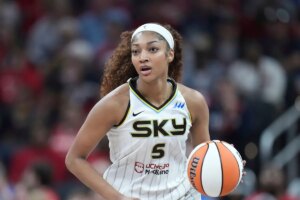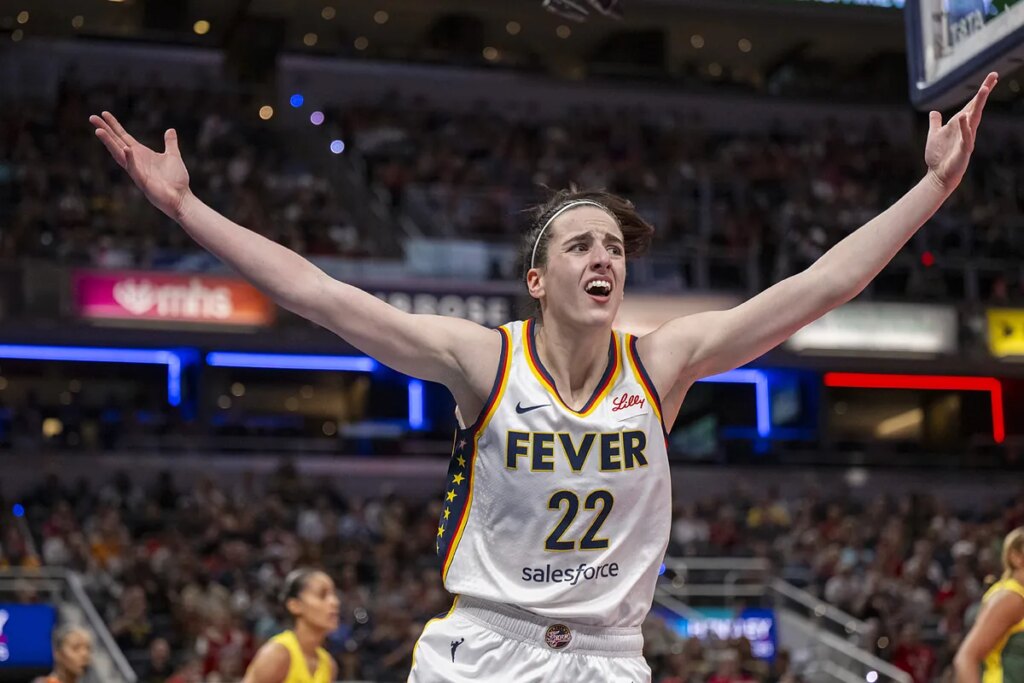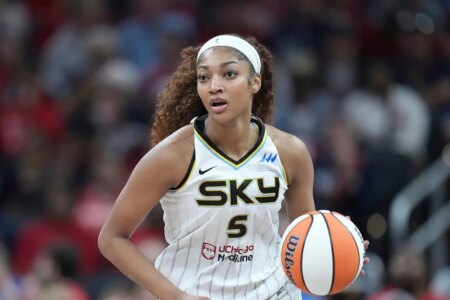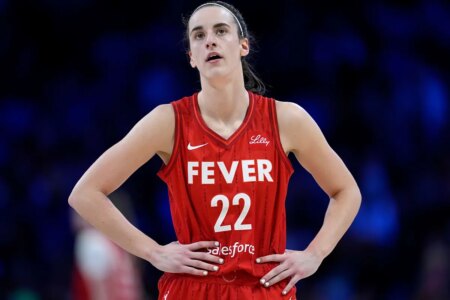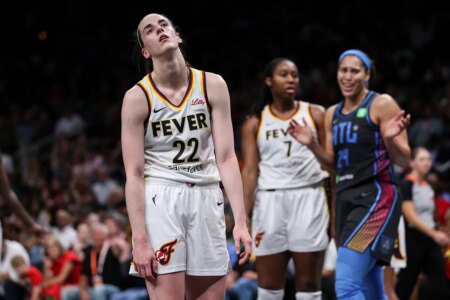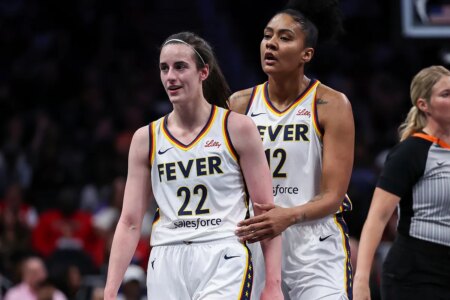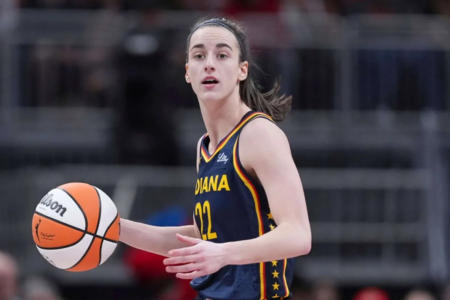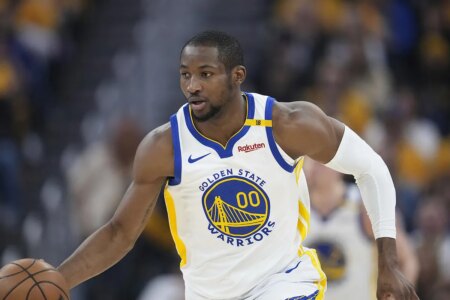Caitlin Clark has become the face of a new era in the WNBA, drawing unprecedented viewership and national buzz-but not everyone is convinced the league’s Clark-centric strategy is sustainable.
While the former Iowa superstar continues to deliver on the court and captivate fans across the country, some experts believe the spotlight may be blinding fans-and the media-to the rest of the talent in the league.
WNBA Commissioner Cathy Engelbert acknowledged the reality during a recent public appearance: “No league is ever about one player, but in this case, Caitlin brought tens of millions of new viewers into the W.”
That statement reflects the massive impact Clark has had, but also highlights a growing concern-what happens when one player becomes the focus of nearly every storyline?
According to some reports, roughly 78% of preseason coverage this year revolved around Caitlin Clark and Angel Reese, reigniting a rivalry narrative that both players have consistently downplayed.
The Fever and Sky are set to meet multiple times this season, but critics are beginning to question whether the media’s obsession with this matchup is overshadowing the rest of the league’s dynamic stars and compelling battles.
On The Ringer WNBA Show, host Seerat Sohi voiced what many have been thinking: the league’s marketing engine may be doing more harm than good by focusing so narrowly on Clark-related drama.
“I’d much rather watch the Sky face off against the Aces and A’ja Wilson,” Sohi said, emphasizing that matchups like Wilson versus Reese offer elite basketball without relying on forced narratives.
In fact, the Aces-Sky clash drew 1.3 million viewers last season-proof that fans will show up for high-level competition beyond the league’s most hyped names.
Sohi‘s real concern is about what’s being sacrificed for short-term gain. “Is it a lack of faith in the product to stand on its own?” she asked. “Which is a much larger and also wrong-headed issue considering how much the game is growing even beyond Clark.”
She argued that the WNBA’s overemphasis on Clark and her so-called rivalries “is a disservice to the players and actively hinders the growth of the game.” It’s not that Clark doesn’t deserve attention-she does-but the imbalance could be stunting the broader recognition that dozens of other players in the league deserve.
Clark’s influence spreads far beyond the WNBA
Clark‘s impact, meanwhile, continues to cross league lines. After the Indiana Pacers won Game 5 of their NBA playoff series against Cleveland, Isiah Thomas drew a surprising comparison between Tyrese Haliburton and Clark.
“When he walked in, I said, ‘He’s walking in like Caitlin Clark,'” Thomas said. “This is a Caitlin Clark-type of game-spreading the floor, right? Shooting it from way out there… I think Haliburton watching Caitlin. I see a lot of her game in his game right now.”
Praise like that, especially from Hall of Famers, reflects just how deep Clark‘s influence runs. Yet, it also reinforces the concern that she has become the singular focal point of every basketball conversation-even at the expense of her own teammates and competitors.
What’s next for the league’s narrative strategy?
The question moving forward is whether the WNBA and its broadcast partners will diversify the storylines they present-or continue to rely on Clark as their primary marketing tool.
ESPN executive Meg Aronowitz, who oversees women’s college basketball coverage, offered insight into that mindset: “It would take a miracle for the women’s title game to get 19 million viewers again,” she said, referencing this year’s record-setting NCAA final.
“It’s not beyond reason for it to get 12 (million) if we get the right teams, the right momentum and the right storylines.”
Her comment-particularly the phrase “as long as we possibly can”-suggests that media executives are keenly aware of how delicate momentum can be, and they’re willing to extend popular narratives for as long as they drive ratings.
Clark’s performance this WNBA season has already created moments of magic, but the spotlight that follows her needs to broaden if the league hopes to grow its foundation, not just its viewership spikes.
For now, the pressure is on the WNBA to show that it doesn’t just have one superstar-it has 144 of them.
Read the full article here


